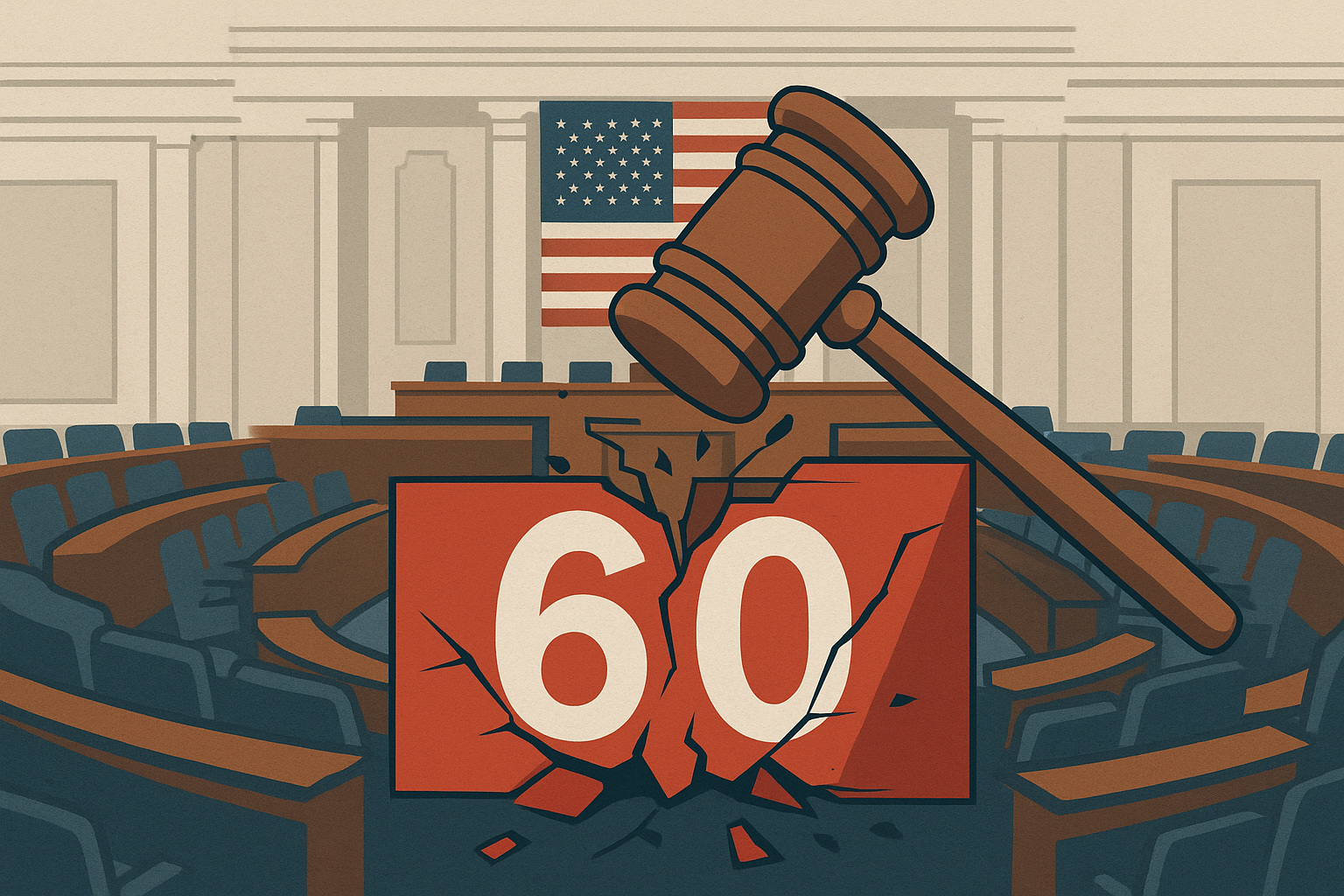I always believed the filibuster was an important part of protecting the rights of the minority in the United States Senate. I believed it was something baked into the design of our government from the beginning. I only learned the history of the filibuster today, after doing some research on my own.
The story we’re taught in school and the media, if we’re taught anything at all, is the Mr. Smith Goes to Washington version where the lone senator stands heroically for what’s right, speaking until exhaustion to stop a bill from passing. The movie was dramatic, noble, and distinctly American. The problem is the filibuster is not in the Constitution. It wasn’t part of the founders’ design. It’s a made-up Senate rule and it no longer serves the purpose it once might have.
In 1789 the Senate followed a rule called the “previous question motion”. It’s a simple rule that allows a majority to end debate and move to a vote. The House of Representatives still uses it today. When a member of the House moves the previous question, and a majority agrees, debate stops and the vote happens.
The Senate originally had this rule. But in 1806, Vice President Aaron Burr, while presiding over the Senate, suggested simplifying Senate rules by removing provisions that were rarely used. One of the items deleted was the “previous question motion.” Burr thought it was unnecessary. Senators at the time valued decorum and rarely abused debate. They had no idea what they were about to set in motion. By removing that rule, they eliminated the only formal way to cut off debate. From that moment on, if a senator refused to yield, debate could continue indefinitely. As the old saying goes, “The road to hell is paved with good intentions”. Burr, thinking he’s improving the Senate, directly caused the situation we’re in today.
The filibuster wasn’t an immediate political weapon. The first filibusters appeared in the 1830s, as senators began to exploit the lack of limits on debate. Over time, the Senate came to see unlimited debate as part of its identity. Senators liked to think of their chamber as the more deliberative body, the place where cooler heads prevailed. To me this ended with the ratification of the 17th Amendment in 1913, which changed how senators were chosen. Originally, senators were appointed by state legislatures because they were meant to represent their state in our structure of government. The 17th Amendment established direct election of senators, and as a result they became merely representatives of the people, just like members of the House. The Senate stopped representing their states.
For most of the 19th century, the filibuster was used sparingly and was more a way to slow down a bill or draw attention to an issue than to block legislation. But over time it became a tool of obstruction.
By 1917, the filibuster had become enough of a problem that President Woodrow Wilson demanded reform. During World War I, a group of senators blocked a bill to arm merchant ships, and Wilson accused them of being “a little group of willful men” who endangered national security. That crisis led the Senate to adopt Rule 22, creating the cloture rule. It allowed the Senate to end debate if two-thirds of members present voted to do so. This finally created a way to overcome a filibuster.
The filibuster played an especially dark role in American history. Southern Democrat (Dixiecrats) senators used it for decades to block civil rights legislation. Anti-lynching laws, voting rights protections, and civil rights bills were filibustered to death. Major civil rights laws were finally able to pass under the two-thirds requirement but it wasn’t until 1975 that the Senate lowered the cloture threshold from two-thirds to three-fifths, the rule that remains today. That change made it easier to end debate but also made the 60-vote standard the new normal for most legislation.
In the 1970s, the Senate created a dual-track system that allowed multiple bills to be pending at once. This gave birth to the “Silent Filibuster“. Instead of forcing senators to stand and speak, they could simply threaten to filibuster, and the Senate would move on to other business unless 60 votes were available to move forward. This is the baloney we live under today. This is why we currently have a government shutdown. So much for the heroic dramatic speechifying by our beloved Senators. They now meekly complain on TV and blame each other.
In 2013, Democrats under Harry Reid eliminated the filibuster for most presidential nominations. In 2017, Republicans under Mitch McConnell extended that change to Supreme Court nominees. Now, only regular legislation is subject to the 60-vote rule. I’m normally in favor of gridlock where not much happens in Washington D.C. To me, the less our elected representatives do the better off our country will be. But now it seems we need to end the circus side-show the Senate has become even if it means more legislation gets passed.
The Constitution says nothing about unlimited debate. The framers created checks and balances, no road blocks. The Senate invented this one all on its own.
The filibuster may have served a purpose at one point, but those days are long gone. Today it only prevents basic legislation from reaching the floor. The time has come to end it and restore the previous question rule. Debate shouldn’t be endless.
